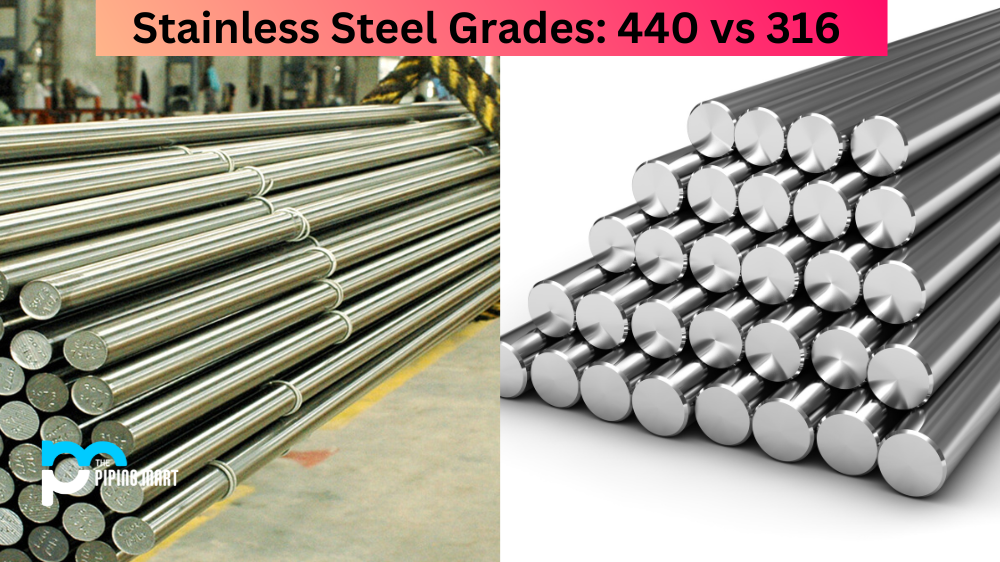Stainless steel is a popular material that is used in many aspects of construction, from the frames of cars to the handles of kitchen tools. But did you know that not all stainless steel grades are the same? In this article, we will be exploring the similarities and differences between two common grades of stainless steel – 440 and 316.
440 Stainless Steel Grade
The 440 grade of stainless steel is primarily made up of 17% to 19% chromium, 1% manganese, 1% silicon, and small amounts of molybdenum, copper, nitrogen, phosphorus, sulfur and carbon. It is magnetic in both annealed and hardened conditions. This grade has great corrosion resistance thanks to its high chromium content. The downside to this grade is that it is vulnerable to saltwater corrosion due to its lower nitrogen content.
316 Stainless Steel Grade
The 316 grade of stainless steel is primarily made up of 16% to 18% chromium and 11% to 14% nickel with small amounts of molybdenum, copper, nitrogen, phosphorus and sulfur. It has excellent corrosion resistance due to its higher nickel content which makes it more resistant to saltwater corrosion than other grades like the 440. However, it does have a lower heat resistance than other grades, so it may not be suitable for use in applications where temperatures exceed 800°F (427°C).
Difference Between Stainless Steel Grades 440 and 316
Chemical Composition
One of the main differences between stainless steel grades 316 and 440 is the chemical composition. Grade 316 stainless steel contains chromium, nickel, molybdenum, and manganese, while grade 440 stainless steel contains chromium and carbon.
Corrosion Resistance
Another key difference between these two grades of stainless steel is the level of corrosion resistance. Grade 316 stainless steel is more resistant to corrosion than grade 440 stainless steel. This is due to the addition of molybdenum in the chemical composition of grade 316 stainless steel.
Strength
Grade 440 stainless steel is stronger than grade 316 stainless steel. This is due to the higher carbon content in grade 440 stainless steel.
Heat Resistance
Grade 440 stainless steel has a higher heat resistance than grade 316 stainless steel. This is due to the higher carbon content in grade 440 stainless steel.
Cost
Grade 440 stainless steel is more expensive than grade 316 stainless steel. This is due to the higher carbon content in grade 440 stainless steel.
Conclusion:
When choosing between stainless steel grades for your next project or application, consider what qualities are most important for your needs. The 440 grade offers great corrosion resistance but may be less suited for environments exposed to salt water due to its low nitrogen content, while the 316 grade offers superior saltwater corrosion resistance but may not be suitable for higher temperature applications due to its lower heat resistance. Consider what qualities are necessary for your application before deciding on which grade best suits your purposes.

Pipingmart is a B2B portal that specializes in metal, industrial and piping items. Additionally, we share the latest information and information about materials, products and various types of grades to assist businesses that are involved in this business.




